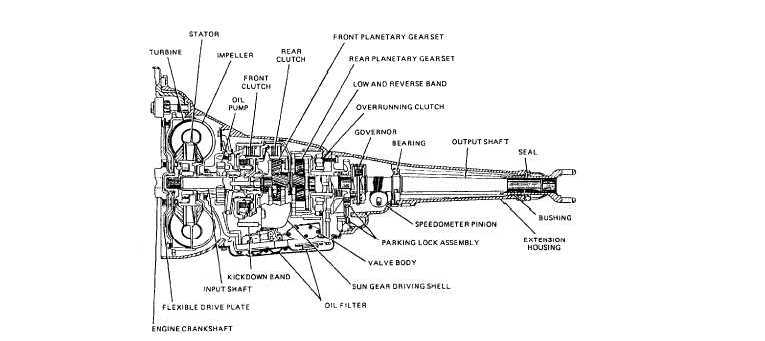hub loose on shaft splines). If this is the case, depending on the amount of wear, you may have to replace the input shaft and the clutch disk. Another condition involving noise and necessitating disk replacement is loose or weak torsional springs surrounding the disk hub. You may also find that the antirattle springs on the pressure plate assembly are weak and require replacement. A hose or misaligned transmission will cause noisy clutch operation. You can easily correct this by loosening the transmission, shifting it into proper alignment, and retightening it.
Stiff Clutch Pedal
A stiff clutch pedal or a pedal that is hard to depress is likely to result from lack of lubricant in the clutch linkage, from binding of the clutch pedal shaft in the floorboard seal, or from misaligned linkage parts that are binding. In addition, the overcenter spring (on vehicles so equipped) may be out of adjustment, Also, the clutch pedal may be bent so that it rubs on the floorboard and is hard to operate. To correct these conditions, you must realign, readjust, or lubricate the parts, as required.
Clutch Pedal Pulsation
Movement felt on the clutch pedal or operating lever when the clutch is being disengaged is called clutch pedal pulsation. These pulsations are noticeable when a slight pressure is applied to the clutch pedal. This is an indication of trouble that could result in serious damage if not immediately corrected Several conditions could cause these pulsations. One is misalignment of the engine and transmission.
If the engine and transmission are not in line, detach the transmission and remove the clutch assembly. Check the clutch housing alignment with the engine and crankshaft. At the same time, check the flywheel for wobble. A bent crankshaft flange or an improperly seated flywheel produces clutch pedal pulsations. After the flywheel is properly seated, check it using a dial indicator. If the crankshaft flange is bent, the crankshaft must be remachined or replaced.
Other causes of clutch pedal pulsations include uneven release lever adjustments, warped pressure plate, or a warped clutch disk. If the clutch disk or pressure plate is warped, it should be replaced.
It would be impractical to list every possible clutch problem and its remedy for repair in this training manual. Table 7-1 lists other possible clutch problems and their corrective action. Consult the manufacturer's operation and repair manual before making adjustments to any clutch system.
AUTOMATIC TRANSMISSIONS
Automatic transmissions (fig. 7-10) are found in all types of automotive and construction equipment. The

Figure 7-10. - Typical automatic transmission, cross-sectional view.
Continue Reading